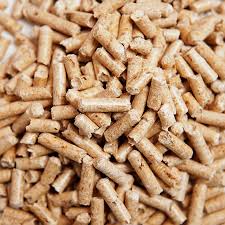All users have noticed wood pellets price increased in Europe, since the beginning of the Ukraine and Russia saga, we have not only seen gas and oil prices increase but also cereals and other basic commodity prices hike. Of course people have to look for cheaper alternatives, there comes the use of wood fuels which led to the increase of wood pellets and other wood prices.

- Supply and Demand Dynamics: Wood pellets are used for various purposes, including residential heating, power generation, and industrial processes. An increase in demand for wood pellets, especially for renewable energy production, can lead to higher prices if the supply struggles to keep up.
- Energy Market Conditions: ENplus Wood pellets are often used as a substitute for fossil fuels in power generation. Fluctuations in fossil fuel prices, such as natural gas or oil, can impact the demand for wood pellets and subsequently affect their prices.
- Policy and Regulation: Government policies and regulations aimed at promoting renewable energy sources can influence the demand for wood pellets. If countries or regions implement stricter renewable energy targets, there might be a greater demand for wood A1 pellets, leading to price increases.
- Trade and Imports: Europe relies on both domestic production and imports of wood pellets. Changes in trade dynamics, including tariffs, transportation costs, and supply disruptions from exporting countries, can impact the availability and cost of wood pellets.
- Raw Material Costs: The cost of producing wood pellets can be influenced by the availability and cost of raw materials, such as wood fiber. Factors like forest management practices, timber prices, and weather conditions can impact the supply of raw materials.
- Currency Fluctuations: Wood pellet prices can be influenced by currency exchange rates, especially if the pellets are imported. Currency fluctuations can affect the cost of imports and consequently impact the prices paid by consumers.
- Weather and Seasonal Factors: A1 Wood pellets are often used for heating, and colder-than-average winters can lead to increased demand for heating fuels, including pellets. This seasonal demand can lead to short-term price spikes.
- Investment and Infrastructure: Investments in wood pellet production facilities, transportation, and storage infrastructure can impact the overall supply chain and, consequently, the prices of wood pellets.
- Global Market Dynamics: Factors such as changes in global energy markets, shifts in biomass demand from other regions, and geopolitical events can also indirectly impact wood pellet prices in Europe.
Majority of households now use wood pellets or other wood products for heating their homes due to high cost of electricity bills but still the price pellets tends to increase progressively as the days go by. We all a looking for a way to stop this and everything to be as normal like before.